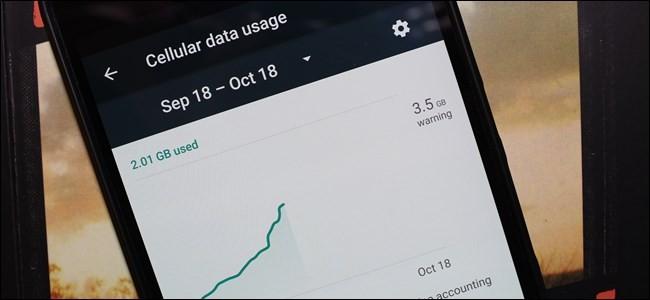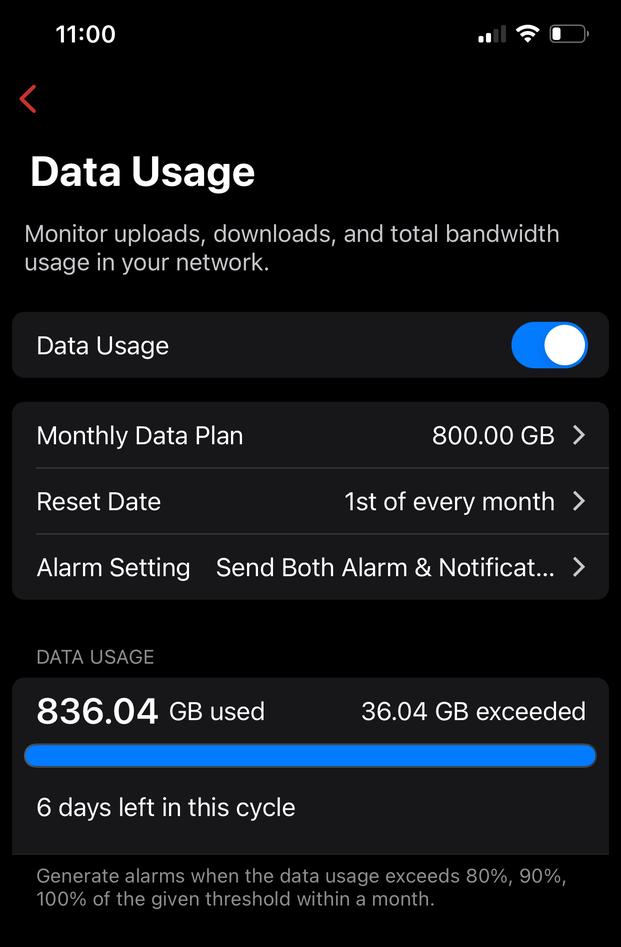
How to manage your home internet plan's data cap and avoid overage fees
According to Deloitte's 14th edition of its digital media trends survey, the number of people who subscribe to a streaming media service ticked up in 2020 (imagine that). Add a 2020 Statista survey that found that the average American household has at least 10 connected devices. What does this mean? It says we're using more and more broadband data every month.
That's all well and good, but several internet providers, including prominent names such as AT&T, Cox, Mediacom and Comcast Xfinity, enforce data caps with at least some of their plans. If you're living with a plan like that, you'll need to ration your internet data consumption each month. Browse, stream or download too much, and you'll risk overage charges on your next bill. With some plans, breaking the cap means your connection will get throttled to a snail's pace for the remainder of the month.
I don't mean to launch into a diatribe against data caps (and I'm not here to affirm the need for them, either), but the hard truth is that many of us have no choice but to live with them. If that's the case for you, you'll need a good strategy for managing that data cap. Here are some basic steps to get you off to the right start.
First things first: What are data caps?
Let's start at the beginning. Data caps are limits -- set by your internet service provider -- on your monthly internet usage. The idea is that there's a limited amount of bandwidth on the provider's network, so the data cap is meant to ensure that no customer or subscriber takes up more than their fair share of that bandwidth.
The gauge for measuring that data usage is bytes. Whereas bits are used to measure the speed of the data as it's transferred -- 200 megabits per second, for example -- bytes are used to measure the data's size (1 byte is 8 bits). Information is tracked in ascending order of kilobytes, megabytes, gigabytes and terabytes. When abbreviated, bits take a small b and bytes a capital B, so you'll see 1Mbps (1 megabit per second), but 1MB (1 megabyte).
The lower the data cap, the less you'll be able to do on the internet before your ISP begins to either throttle your service -- slowing down the speed of your internet connection -- or charge you extra fees for exceeding your data limit. In some cases, it might even do both.
Why am I going over the basics? Because one of the best ways to handle a data cap on your home internet plan is to understand it better.
Read more: Best cheap internet providers of 2021
Which providers enforce a data cap?
Here at CNET, we've reviewed every ISP with internet service available to at least 10 million people in the US. Among them, here are the providers that enforce a data cap.
Research ISPs and your own data usage
Suppose you currently have a broadband provider imposing a data cap upon your internet service. In that case, your first step should be to research to find out if your address is serviceable for another provider. You can save yourself a whole lot of hassle if you're able to sign up with an ISP that doesn't impose data caps at all.

But if that isn't an option, you want to start by being aware of the amount of data your typical online activities use. In CNET's internet speed guide, we include recommendations for the type of speed you'll need for various online activities. Let's revisit that chart, but add in the amount of data you'll typically use for each activity.
Admittedly, that's a lot of numbers. It can also feel a little esoteric and difficult to grasp.
According to OpenVault's broadband study from the third quarter of 2021, it all adds up to that the average US household uses approximately 435GB of data monthly. Again, that number appears to be on the rise -- at the peak of 2020, average usage spiked to a height of about 400GB per month. If you have a provider like Cox or Xfinity where your data cap is approximately 1.2TB (1,200GB), then you're probably not bumping up against your data allowance too often. But other ISPs -- especially on their cheaper, more introductory plans -- feature limits in the 40GB-to-300GB range, which is below what the average American household uses and would require some belt-tightening, as it were.
So, once you build some awareness of how much data your typical activities eat up, you can also start to anticipate when your data consumption might increase.
I'll give you an example from my experience. During the pandemic, my wife and I indulged in a new 4K TV and Sonos system to make the most of our shelter-at-home experience. After all, if I'm going to watch Dune or The Matrix Resurrections from my couch instead of at the movie theater, I want to have a theatrical-adjacent type of experience, complete with crisp, bright images and booming surround sound.
What that also meant was we had to upgrade our Netflix subscription so we could take advantage and watch The Crown and Sweet Tooth in Dolby Vision as well. But according to Netflix, that move meant we were doubling our data usage. Instead of using 3GB per hour with each program, we were now eating up data at a rate of 7GB per hour of viewing.
Do we regret it? Not at all. We went into it with our eyes wide open about the data usage cost we would incur, which meant we could prepare for it. We definitely would have had sticker shock after our extensive quarantine binge sessions if we had been unaware. This leads me to my next point…
Check yourself by monitoring your usage
It's one thing to know how much data certain activities use up. It's another to stay on top of how much you use. Just as we might be shocked by how many calories we consume in a day once we start to pay attention, we might similarly be stunned by what's gobbling up our data.
There are many different ways to track your data usage, but perhaps the easiest is to download and use your ISP's app. One big reason is this is how it's tracking your usage and what it's holding you accountable. This will allow you to stay on top of things and pace yourself for your billing cycle, which is crucial because, in most cases, your data usage isn't tracked by the calendar month but a rolling 30-day cycle. Using your ISP's app will help you sync up correctly with that window.
That said, you can also track your usage by using the settings on your router. I mention this mainly for those who might be using their own equipment rather than the modem/router rental from the provider. It's a good way of checking your usage against the provider's app and helping you see if there are any inconsistencies.
Read more: The best high-speed ISPs for gigabit internet
Plan ahead to maximize your data usage
Now that you have a better idea of the amount of data you tend to use, you can start to think several steps ahead about what you need to do to maximize the use of your monthly data allowance.
Let's go back to the example of my streaming services splurge. While I intentionally increased my data usage to take advantage of streaming in 4K, you can also go the other way to help minimize the dent in your data allowance.
Let's say you want to catch up on episodes of The Handmaid's Tale on your tablet while your roommate watches something else on the TV. You can go to Hulu settings and lower the video quality, so you're streaming in standard definition rather than HD or 4K. You can do this for Disney Plus, Facebook, Netflix, YouTube and other services.
Also, take the time to explore what options your provider might have to help you massage your data cap. For example, both HughesNet and Viasat offer windows in which customers get additional data for no extra cost.
The HughesNet Bonus Zone, which occurs during the off-peak hours of 2 a.m. to 8 a.m., gives customers an additional 50GB of data per month. Viasat features unmetered data for customers on specific plans during a similar window of 3 a.m. to 8 a.m. Are those times convenient? No. But with some planning, you can schedule some movie or gaming downloads to take advantage of the extra data.
Bottom line: When it comes to data caps, be disciplined but realistic
It's fair to say that we all have moments when we need to slouch on the couch and binge to our heart's content. No judgment here. But when all's said and done, if you've done the work -- taken advantage of various bonus times and opportunities to downgrade some of your activities to use up less data -- and still find you're exceeding your data cap, maybe it's time to pay for unlimited data.
Most ISPs will typically charge you $10 for every 50GB you burn through over your data cap. In most cases where there's an option for unlimited data, it'll cost you an additional $35 to $40 per month, so if you're paying $50 or more in overage fees, on average, it's time to consider paying up front instead.
If unlimited data isn't an option with your provider, you're in a more challenging spot. In that case, it's a good idea to start by exploring other options to see if another provider might be a better data fit, even if the speeds are slower. If there aren't any options like those available at your address, you'll need to keep a frugal data budget to avoid the extra fees that come with breaking your cap. Maybe that means binging your next series via DVD or Blu-ray, scheduling your downloads for the wee hours of the morning or limiting your internet usage to essential functions like staying connected with family and paying bills. Whatever the case, understanding the ins and outs of your plan and how you rack up data during the month is the key to making it work.
}})